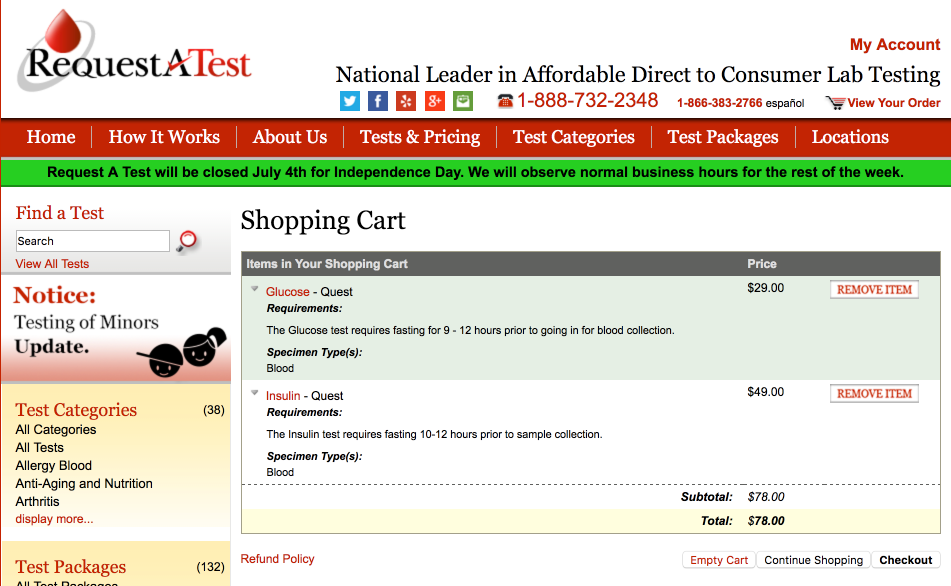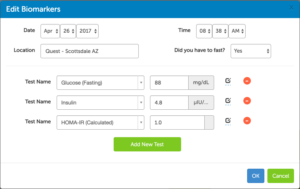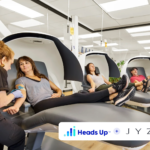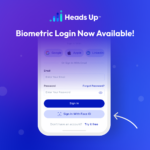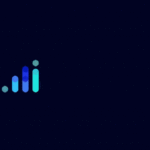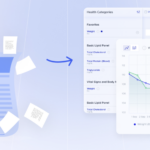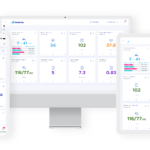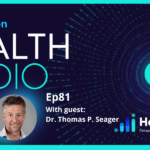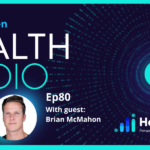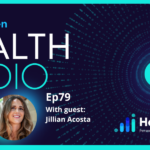We’ve covered a lot in our low-carb lab testing series so far. At this point, we felt it was time for a real-world case study to tie everything together. In this post we will take a look at my own experience ordering fasting glucose and fasting insulin tests, calculating my HOMA-IR score, and tracking results in my Heads Up profile.
Heads Up Health is a web-based product designed to help individuals centrally manage their health data. By giving you powerful tools for self-directed and data-driven care, our product can be your compass on the path to optimal health. You can learn more or create your account by clicking the button below. Or, read on for our case study on Low-carb Lab Testing.
[maxbutton id=”6″]
Low-carb lab testing – a case study
As we’ve explored in previous posts, there are many reasons why an individual may see normal blood glucose levels and still be at risk for metabolic issues down the road. One possible reason is that the body is over-compensating with insulin to keep blood sugar within normal ranges. I decided to put this to the test with my own data.
Yes, I regularly check my fasting blood glucose levels at home as part of my low-carb/ketogenic lifestyle. And yes, according to my glucometer, my blood sugar is within healthy ranges. But as we know, relying on just my glucometer (without a corresponding fasting insulin test), doesn’t always tell the full story. I felt it was an ideal opportunity for some self-directed n=1 experimentation. I was curious to see the fasting insulin data and calculate my own HOMA-IR score.
Step 1 – Ordering the tests
Unfortunately, many conventional doctors within the US will not order a fasting insulin test unless they suspect metabolic disease (or you have already been diagnosed with a metabolic disease). This doesn’t do much good for the person who is trying to be proactive. Even if you do successfully sweet-talk your doctor into ordering the tests you want, there are no guarantees your insurance company will cover the cost of the test. Fighting with an insurance company over tests they won’t cover is enough to make a grown man (or woman) cry. I’ve been on the losing end of many such battles and it’s a miserable place to be.
To bypass uncooperative doctors and insurance companies, I personally use request-a-test.com to order my own labs. Request-a-test allows you to choose between LabCorp or Quest Diagnostics for the blood draw. Heads Up Health can electronically connect to Quest Diagnostics so my results will update automatically.
I purchased the fasting insulin test for $49 and the fasting glucose test for $29. The overall cost was not much more than my insurance co-pay if I were to see a doctor.
Step 2 – Scheduling the blood draw
I scheduled an appointment with Quest Diagnostics to have the blood draw.
Note: for extra nerd points, I brought my glucometer with me to the lab. I wanted to take a reading with my glucometer at the same time as the laboratory blood draw so I could see how accurate my glucometer was compared to results from a full-blown lab testing company with far more sophisticated technology for analyzing blood samples. Results are covered later in this post.
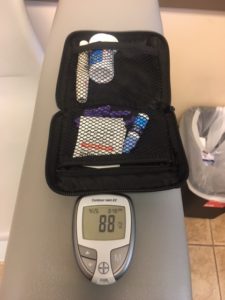
To check the accuracy of my glucometer, I took a reading at the same time as my lab draw from Quest.
Step 3 – Assessing my test results
Within 24-hours, I received an e-mail notification from request-a-test that my test results were available. Since it had been many years since my last fasting insulin test, I was anxious to see the results:
- Fasting glucose: 84 mg/dL
- Fasting insulin: 4.8 µIU/mL
Note: The reading on my glucometer was 88 mg/dL (compared to 84 mg/dL from Quest), which was taken just moments before the blood draw from the lab. Overall, I’d say my trusty old glucometer held up pretty well!
Step 4 – Calculating my HOMA-IR score
With fasting insulin and fasting glucose readings in hand, I was now equipped with the data I needed to calculate my HOMA-IR score to assess my level of insulin resistance.
I used the HOMA-IR calculator located here. After entering my results into the HOMA calculator, my score was 1.0. I was pleased with this result and felt assured that both glucose AND insulin levels were properly in check.
Step 5 – Tracking my results
Heads Up Health was designed to empower individuals to make informed, data-driven health decisions. Our product gives you the ability to easily track and manage your own lab test results, which can be a powerful tool on your own health journey.
I entered my results for fasting glucose, fasting insulin, and HOMA-IR and saved this data in my Heads Up profile. I also uploaded a copy of the PDF from the lab so I have the source documents for future reference.
Summary
This post is a simple example that summarizes the topics covered thus far in the Low-carb Lab Testing series. The post demonstrates how anyone can get in the driver’s seat and order their own labs when the need arises.
I was able to order my own fasting glucose and fasting insulin tests without the need for doctor intervention. I was then able to calculate my HOMA-IR score and assess my results. Lastly, I used Heads Up Health to store my results so I have easy access to them for future reference. I can also test again in a year or two and easily compare my results to previous tests.
This is true patient empowerment and something everyone should have access to if they so desire.
[maxbutton id=”7″]

